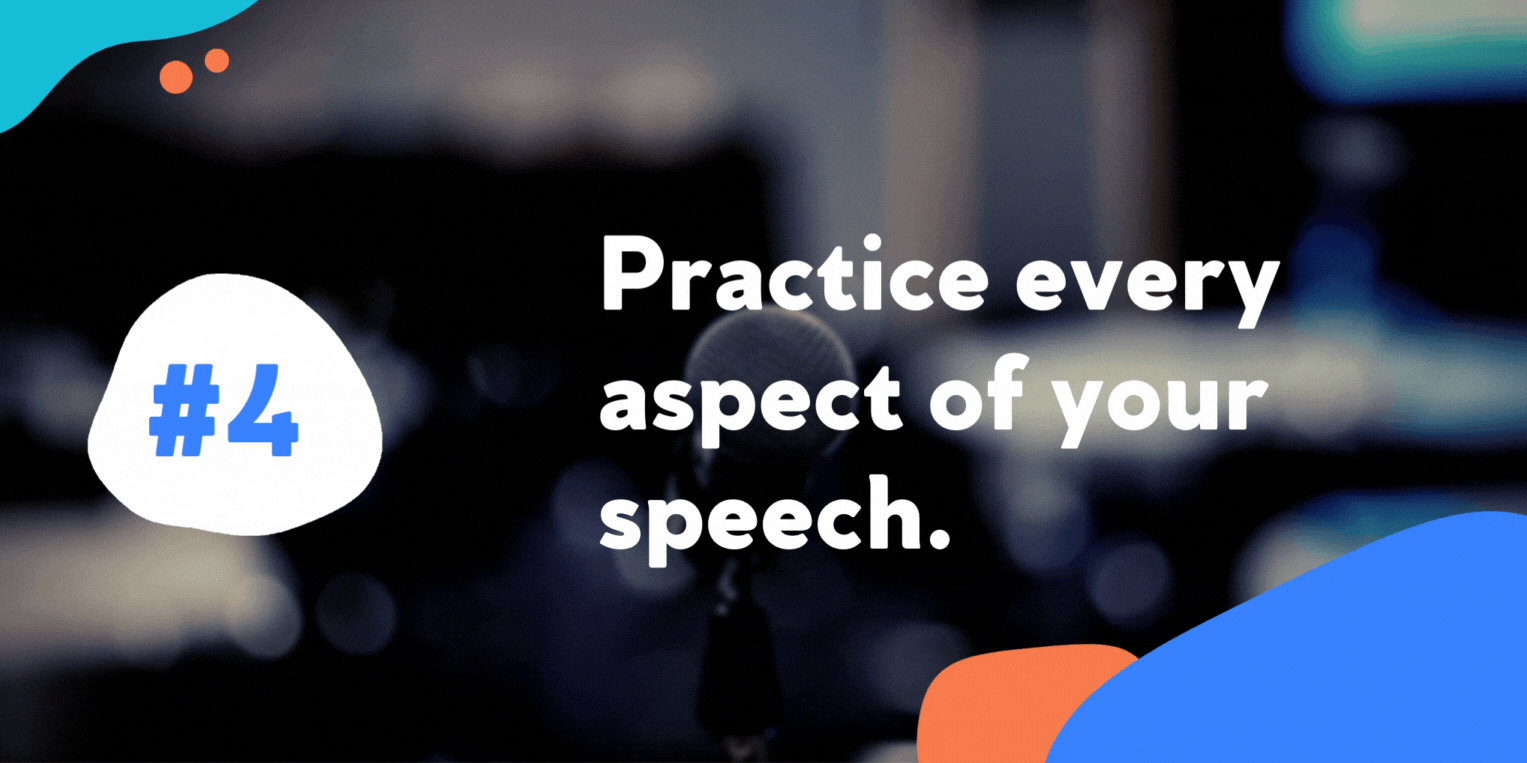5 Conference Speaking Tips for Association Professionals

Written by guest contributor Patti Schutte.
The foundation of any effective association conference is informative, engaging presentations. That’s why, as an association conference speaker, you have an incredibly important role to play.
Your conference might be designed to facilitate a greater understanding of current industry events, allow industry professionals to network and form new relationships, or even help members earn micro-credentials to advance in their professional development. As a presenter, your job is to create relevant and engaging presentations that help attendees reach their professional goals.
If you’re struggling to pull together a compelling presentation that facilitates greater audience understanding, these five speaking tips can help:
- Start with the conclusion.
- Speak authentically.
- Design your visual elements intentionally.
- Practice every aspect of your speech.
- Consider working with a presentation coach.
These speaking tips won’t only help you deliver a well-rounded, effective presentation. They can also help you create a more interesting speech that helps dispel the idea that conference presentations are dry and boring. Let’s dive in!

1. Start with the conclusion.
Naturally, when you sit down to plan your conference presentation, you might think about creating your opening first. However, we’ve found that it’s most effective to begin the planning process by figuring out how you’ll wrap things up. That’s because your conclusion is the part of your talk that will be most memorable for attendees, lingering in their minds after they move on with the day (and hopefully long after the conference concludes).
As you plan your presentation conclusion, emphasize a handful of key takeaways from your presentation that attendees can use in their daily professional lives. MemberClicks’ meeting takeaways guide recommends leaving attendees with updates on current events, ways to get involved in the issues you’re discussing, or a greater understanding of a new concept or idea.
It’s also helpful to end your presentation with concrete action steps. Give attendees instructions on how they can apply what they’ve learned to their personal or professional lives.
By sticking the presentation landing, you’ll help attendees get more out of your session. Once you’ve determined your conclusion, you can go back to the start and create a roadmap for how you’ll guide your attendees through your speech.

2. Speak authentically.
The most engaging presentations are distinct and authentic. As you create your conference presentation, make sure every aspect of the speech sounds uniquely you. Attendees will benefit from hearing first-hand accounts as you incorporate your individual perspective and experience.
Use these tips to help you speak more authentically:
- Include stories and examples from your daily life. Add more credibility to your speech and make it more memorable by using real stories and examples. For instance, you could use an anecdote about a particularly effective business meeting you hosted to illustrate a larger point about corporate efficiency. Or, provide an example of a time when you put one of your talking points into action and it made a major impact in your professional life.
- Don’t try to emulate other speakers you’ve seen or use cliché speaking techniques. Design your speech so that it sounds natural, as if you were speaking to a friend rather than a large group of people. Overly-scripted or clichéd speeches tend to bore audiences or come off as robotic.
Remember, as an association professional, you’re not just speaking to a random audience of conference attendees—you’re engaging with your community of fellow association professionals. Your audience consists of people that you likely work with, network with, or go to for career guidance. They’ll be able to spot the difference between an authentic presentation and a cookie-cutter, generic speech.

3. Design your visual elements intentionally.
What you decide to show during your presentation can be just as impactful as what you say. Effective visuals can appeal to visual learners, further explain complex concepts, and make your presentation more engaging overall. That’s why it’s important to choose your visuals intentionally.
Follow these steps to design the visual aspect of your presentation:
- Storyboard your presentation. Decide which visuals will work best at different points in the presentation. Choose visuals that complement your speech rather than distract from it.
- Ensure visual consistency. Make sure each slide is visually uniform and branded to your organization or business (if applicable).
- Balance visuals and text on each slide. Too much information or text on each slide can become overwhelming. Keep your slides as simple and easily digestible as possible.
Nowadays, you aren’t limited to using PowerPoint to design your visual components (although a straightforward slideshow may be the right visual format in some cases). There are plenty of creative presentation tools available, including Canva, Prezi, and PowerPoint alternatives like Keynote or Google Slides. Research the various options available to choose the right format for your presentation style.

4. Practice every aspect of your speech.
Conference attendees will expect to see a well-prepared, organized presentation that goes off with minimal hiccups or technical difficulties. Practicing your presentation is essential to reduce mistakes and deliver more value for attendees.
Be Brilliant Presentation Group recommends conducting three sequential practice sessions focused on rehearsing different elements of your speech, including:
- Delivery of the visuals and verbal skills. Focus on the word choice, phrasing, and other verbal elements of your presentation to get the hang of speaking and moving through your visual aids at the same time.
- Delivery of the visuals and technical elements. Combine the use of your visuals with the technical elements of your speech, paying attention to audience engagement tactics, body movement, and props if you’re using any. This is where you should test-run your technology to ensure everything is working properly. If you’re presenting at a virtual conference, test out the video management or audio recording processes ahead of time. If you’re speaking at an in-person conference, see if you can practice on the stage where you’ll be presenting.
- Delivery of the visuals, technical elements, and nonverbal presentation. Lastly, you’ll put the finishing touches on your presentation by pairing your use of the visual and technical elements with more subtle details such as your body language and facial expressions.
By practicing consistently and rehearsing every aspect of your presentation, you’ll be more prepared and confident while speaking at the conference.

5. Consider working with a presentation coach.
If you feel like you could use additional assistance or an outsider’s perspective during your presentation planning process, consider working with a presentation coach. These experts can support you through every step of the process, from planning your presentation to working with you on conference day to make sure everything goes smoothly.
To help you prepare for your association’s conference, specifically look for a presentation coach who specializes in conference speaking. Conference speaker training coaches can support you in the following presentation aspects:
- Pre-conference training sessions
- Personalized coaching, working with your natural strengths
- Visual aid design
- Recording your presentations if necessary for virtual events
- On-site, day-of support for in-person conferences
Whether you’re a novice or an experienced public speaker, a conference speaking coach can meet you where you are to help refine your skills and create an effective presentation that works for your specific conference.
Preparing for a conference presentation can be stressful, especially if you have public speaking anxiety. However, by following a few preparation best practices and working with a speaking coach when necessary, you can feel more confident and comfortable when you’re up in front of the crowd. Plus, you can create a presentation that facilitates valuable educational opportunities for your fellow association professionals.

About Patti Schutte
Patti Schutte is the CEO, Founder, and Principal Coach of Be Brilliant Presentation Group. Be Brilliant Presentation Group’s coaching system results in speakers moving from fear and avoidance to confidence and purpose.
If fear of presenting runs through the veins of the majority, then Patti is the minority. She’ll be the one to grab the mic and quickly have the room engaged, laughing, and learning. Not skills you’d expect from someone who has a degree in mathematics. Her unique combination of being analytically minded, extroverted, charismatic, and skilled in presenting and training has guided her career journey. Her diverse presentation experiences include classroom and corporate training, growing and motivating an independent sales force, developing a team of national presenters, speaking at conferences, and transforming the presentation skill of professionals. She believes everyone deserves the advantage of brilliant presentation and speaking skills.
If you are tired of giving subpar presentations, frustrated by the opportunity loss you’ve experienced, want to streamline your presentation process, and are motivated to learn and improve, Be Brilliant Presentation Group is ready to work with you! Patti’s four step process efficiently gets you from the brainstorming phase to completed, well practiced slides that you’re proud of and a feeling of preparedness for your presentation. Patti has had many people say they accomplish more in 30 minutes with her than they did in two full days without her.